Case Study: Redesign of the Lighting World
We must admit, whenever a client announces a redesign, our team feels a bit anxious.
We pay special attention when it’s a client like Donoci, whose World of Lights ranks among the top ten fastest Czech e-shops.
In this case, however, the redesign turned out well, and we’re excited to show how we achieved this happy ending. Feel free to use our case study as a guide for a successful website overhaul.
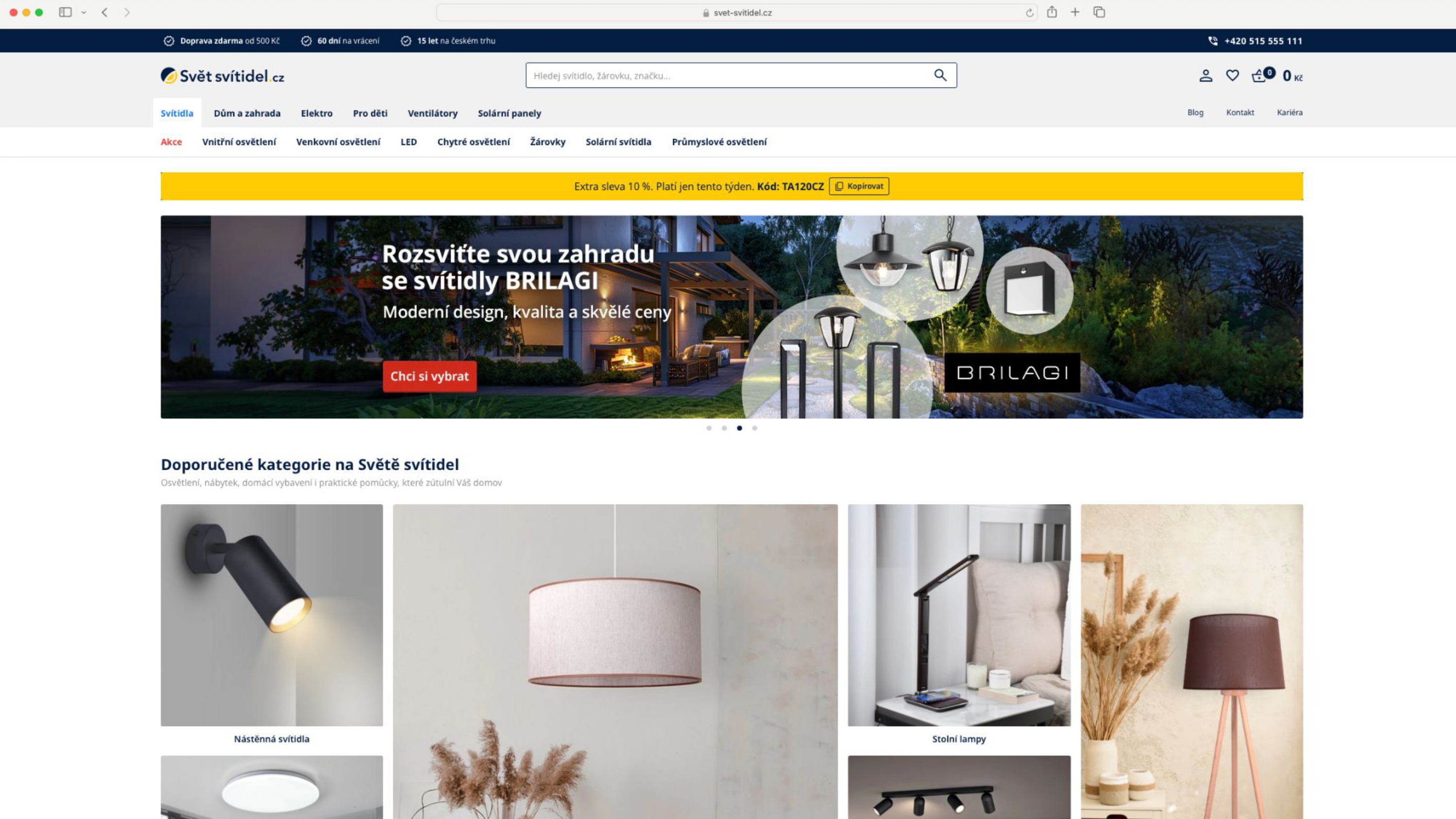 The World of Lights in all its radiant glory.
The World of Lights in all its radiant glory.
Experienced web developers know that redesigns come with risks. One of them is a decline in speed, which we’ve encountered many times, even though most major website changes aim to improve it.
How to Avoid Ruining a Redesign from a Speed Perspective?
Looking back at the redesign process for Svět svítidel, we can derive several recommendations applicable to nearly all major website overhauls.
1) Communication is Key
The client informed us well in advance about the upcoming change, allowing us to propose a process for handling everything. We maintained long-term contact and approached the project as speed consultants proactively.
2) Beware of Major Technical Changes
The path to slow websites is paved with good intentions from developers. Often, attempts to speed up by switching to modern JavaScript frameworks result in the opposite effect. At Svět svítidel, only minor technical adjustments were made by the developers from Programie. We were informed about all changes and could plan accordingly.
3) Without Measurement, There’s No Knowledge
For clients with stable speed, we consistently measure using Monitoring PLUS only synthetically and with CrUX data from Google. However, for larger changes, we conduct detailed Real User Monitoring (RUM), which we did just before launching the redesign, allowing us to gather real-time data.
4) A Knowledgeable Team Performs Better
As you know, we prioritize Performance Culture and educating clients and their developers. We have a long-term collaboration with Programie, and we know their team has learned a lot from us, enabling them to implement further speed improvements independently. For other clients, we recommend brief team training before major changes.
5) Do You Have Templates? Can We See Them?
The first feedback from consultants regarding speed comes when the client has coded templates ready. We can assess them from a frontend performance perspective, ensuring that nothing critical is missed before production. The next phase is testing on staging, where everything is connected to the backend.
6) Time for Feedback Implementation
We will only see the true speed of the website after deployment to production, as we need data from users. Clients often overlook this.
Teams also rarely have time for anything after a redesign, especially for speed. They are busy catching up on backlogs. However, after launch, we usually receive the most tasks and feedback.
For the Svět svítidel redesign, we accounted for this and had time to address minor speed-related issues. Hooray!
It turned out well; speed is improving.
Overall, at the domain level, metrics remained at their original values, which is excellent.
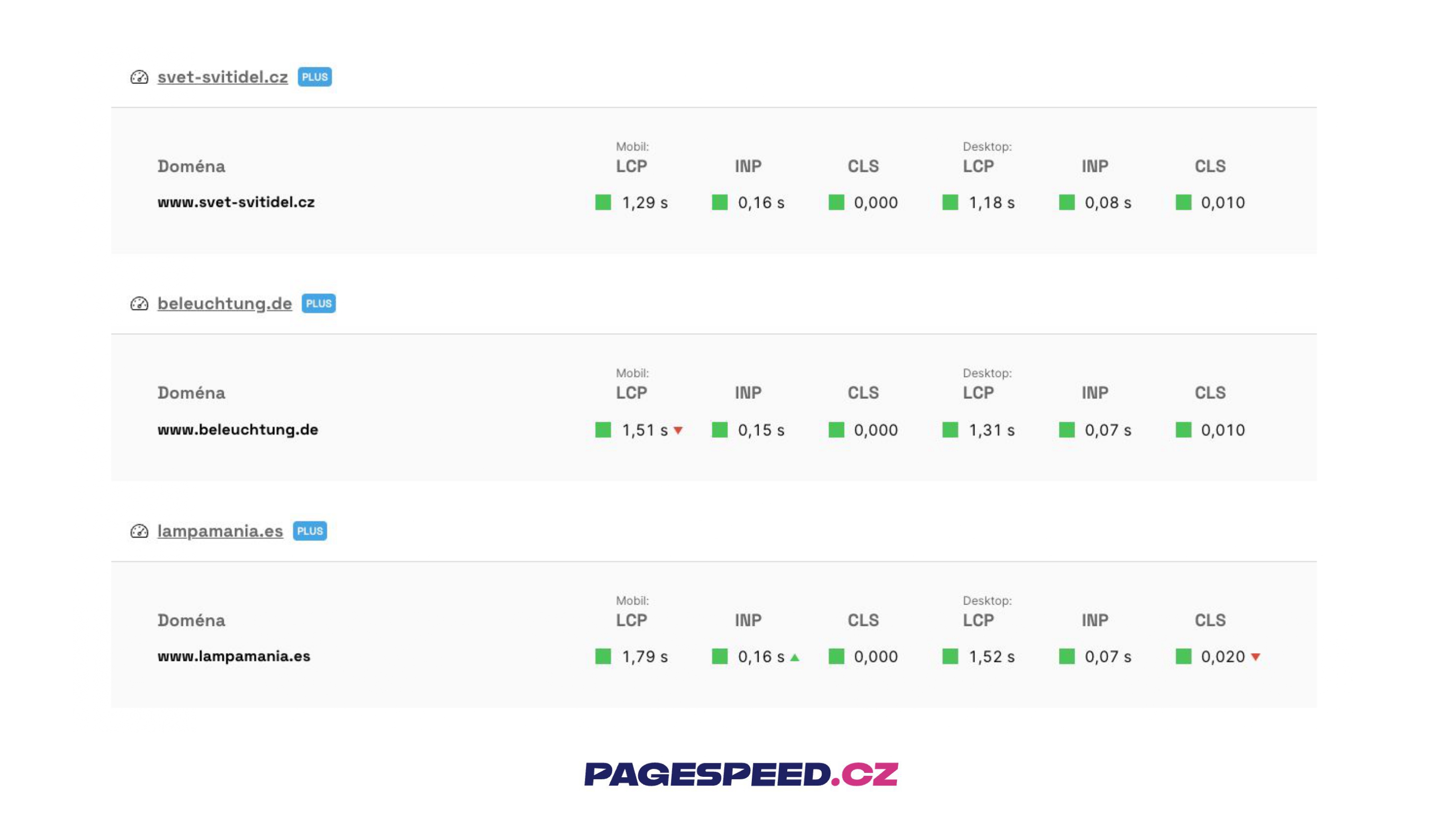 <2>Core Web Vitals metrics have remained stable, with some even improving.
<2>Core Web Vitals metrics have remained stable, with some even improving.
There is one exception – the INP metric has started to improve. This is great news because, as part of Web Vitals, it impacts SEO and PPC on Google. Additionally, thanks to RUM analysis, we know that this metric correlates with conversion rates.
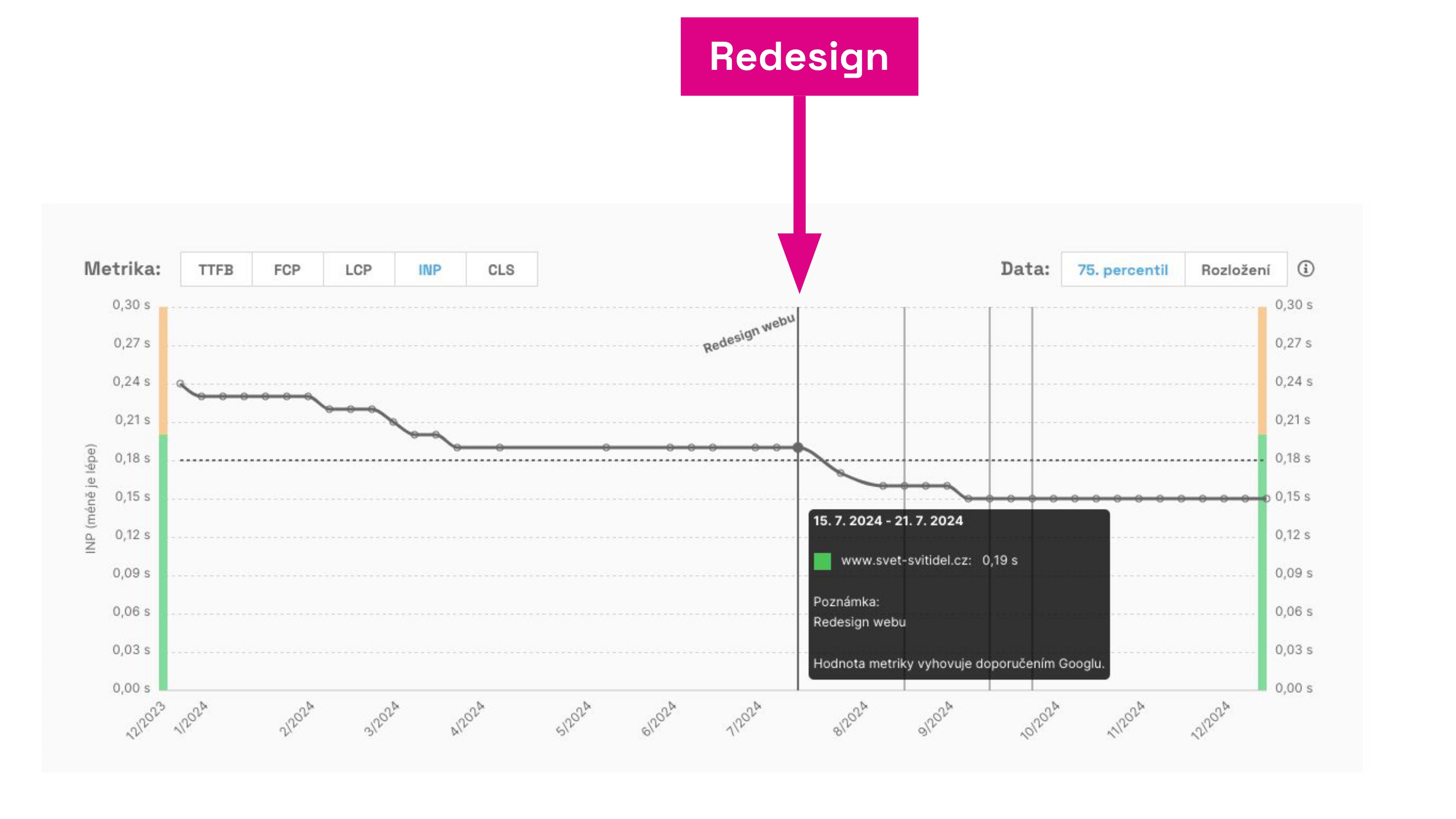 Improvement in the INP metric since the redesign of Svět svítidel.
Improvement in the INP metric since the redesign of Svět svítidel.
On some type pages, INP improved by double-digit percentages. SvětSvítidel.cz is now one of the first major client websites that (according to Search Console) has no URLs requiring attention regarding INP:
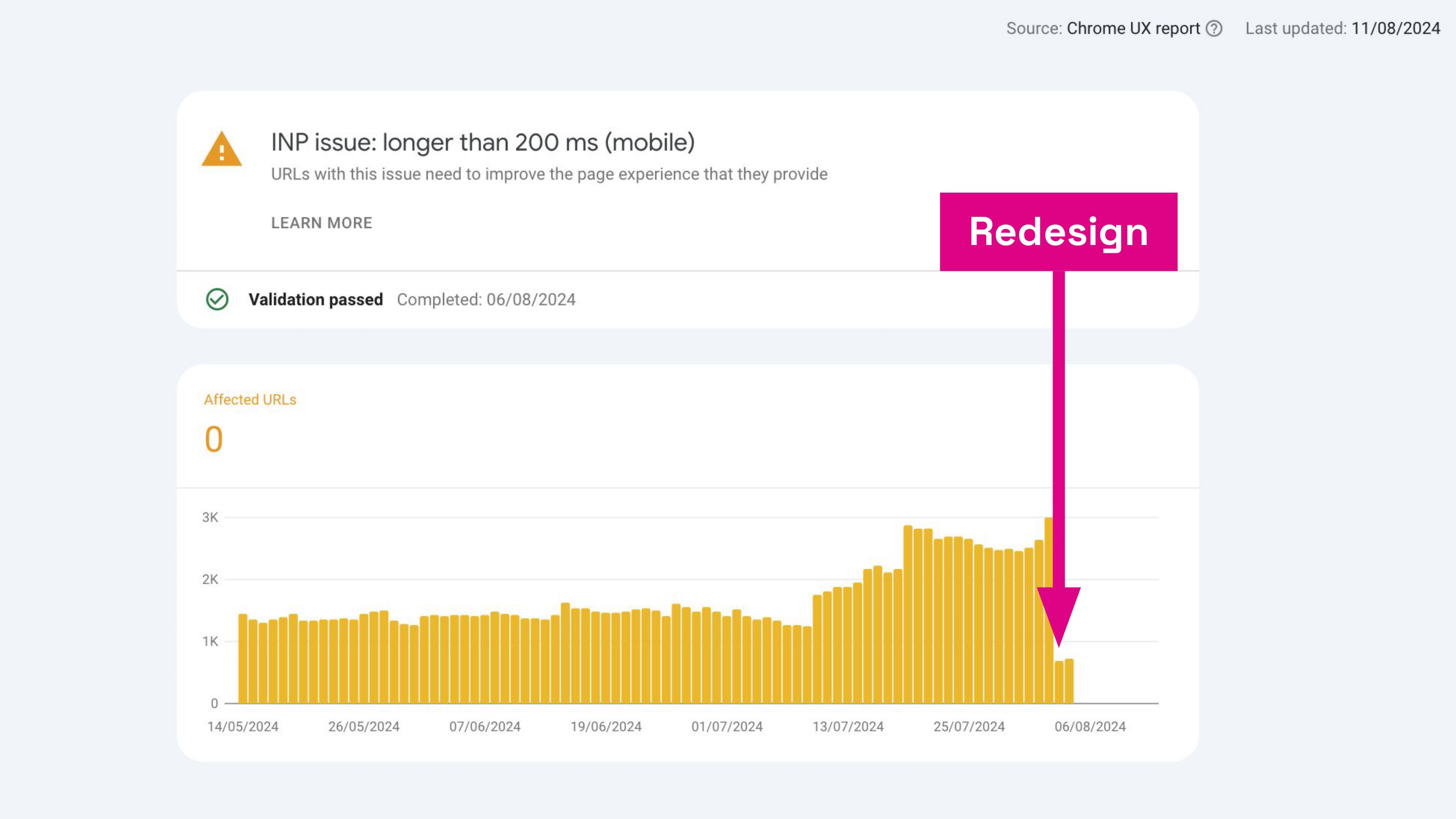 Zero URLs with problematic INP metrics. This is a relief in Google Search Console.
Zero URLs with problematic INP metrics. This is a relief in Google Search Console.
The INP metric, along with others, benefited from adjustments in JavaScript that allow Chrome to use cache for a much larger number of visits when browsing the history of viewed pages, known as BFcache.
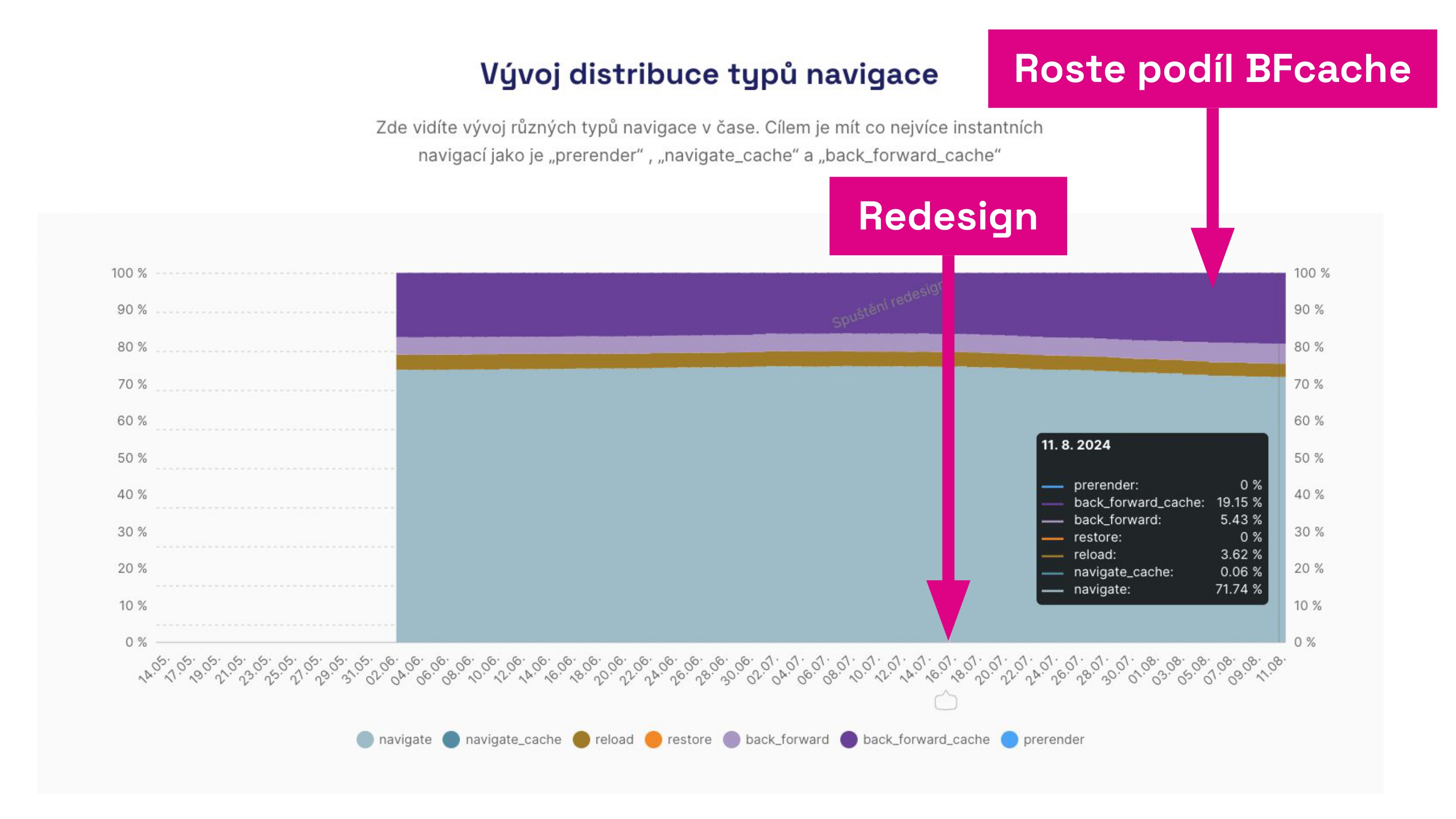 The greater the share of instant navigation types (BFcache, prerender), the better.
The greater the share of instant navigation types (BFcache, prerender), the better.
The increase in page views supported by BFcache is nicely illustrated in our new report on Navigation Types.
Thank You
For this project, we were pleased that everything went smoothly, with minimal involvement and costs on our part.
This is the result of a long-term collaboration where all parties approach the goal of maximizing website speed constructively.
Our thanks go to the client at Donoci (Jakub Rejlek, Tomáš Mikletič, Monika Pilátová, Martin Šimko), to Programie (Petr Rzeplinski, Tomáš Vacho, David Kaleta, Pavel Kramný, and others), and to Zuzana Šumlanská, who managed everything for us.